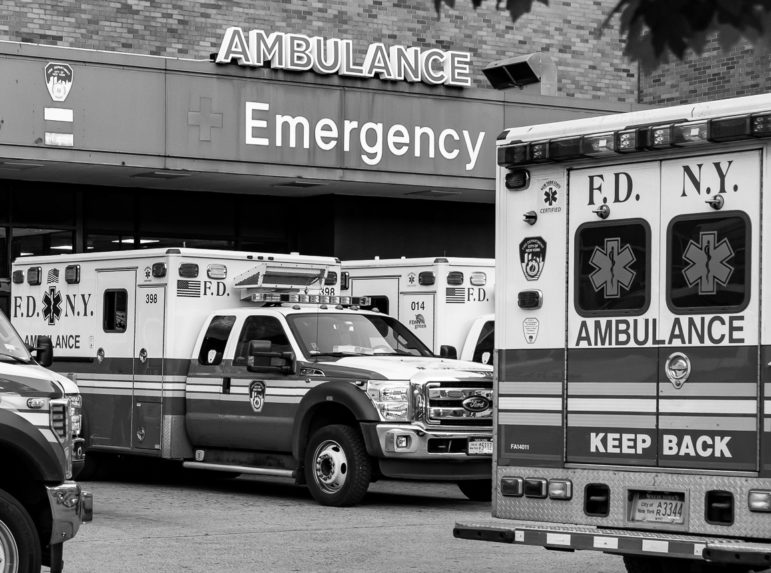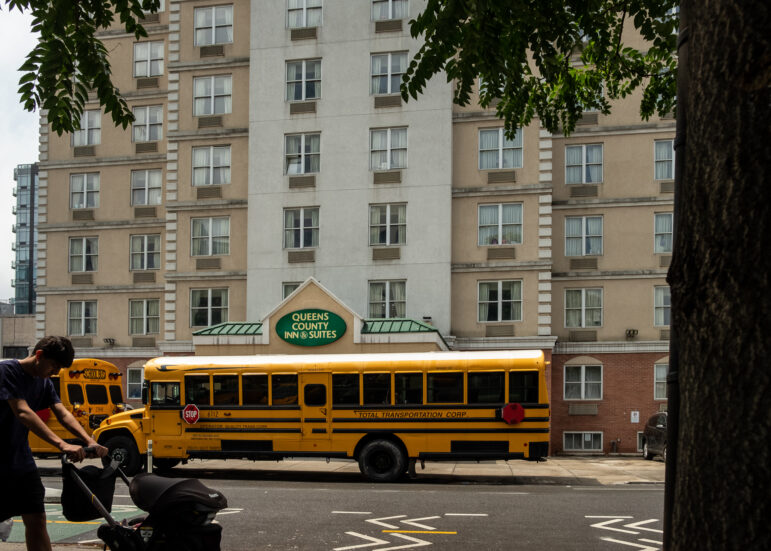“The city’s annual census–known as the Homeless Outreach Population Estimate (HOPE)–has served as a tool for measuring our progress toward ending street homelessness. However, HOPE misses a critical component of NYC’s ecosystem: hospitals. By ignoring this population segment, the city underestimates the true number of unhoused individuals.”

Adi Talwar
Outside Lincoln Medical Center in The Bronx.On a cold night in January 2020, 226 people experiencing homelessness were seeking shelter in hospital emergency departments across New York City. Hospitals have long been places where unhoused and unsheltered New Yorkers seek care and refuge, but those who do so are rarely counted in the city’s official tally of unsheltered populations.
These individuals, whose numbers have likely increased due to recent COVID-19 and flu surges and Mayor Eric Adam’s new forced hospitalization plan, often fall between the cracks of two disjointed systems, which lack the coordination, expertise, and resources necessary to adequately support unhoused people with medical needs. Now more than ever, we need improved communications between healthcare systems and homeless services in order to properly count unsheltered populations, provide support to unhoused patient populations, and address overburdened healthcare systems.
This week, New York City’s Department of Homeless Services (DHS) will dispatch its homeless outreach teams to estimate how many New Yorkers are unsheltered. Since it was established in 2005, this annual census—known as the Homeless Outreach Population Estimate (HOPE)—has served as a tool for measuring our progress toward ending street homelessness. However, HOPE misses a critical component of NYC’s ecosystem: hospitals. By ignoring this population segment, the city underestimates the true number of unhoused individuals.
This underestimation has direct budgetary implications. HOPE’s results are used to allocate city resources to the unhoused population, including the distribution of Safe Haven beds and the contracting of street outreach teams. In addition, someone who spends every night in the emergency room, and is not known to one of the city’s contracted homeless outreach teams, may be ineligible for permanent housing programs that require verification of homelessness. In the absence of an accurate HOPE count, our organization has created an annual Hospital Homeless Count and has urged DHS to include hospitals in its annual census. In our most recent count, we found that 22 percent of respondents reported visiting the emergency room every day over the previous year. These individuals deserve to be accounted and provided for.
New York City hospitals need support managing this patient population. Historically, hospital staff have allowed unhoused people to sleep in non-treatment areas, such as waiting rooms, or auditoriums, but recent seasonal surges have led to overcrowding. Hospitals and healthcare workers are at capacity, and most hospitals that have been providing these services lack the adequate resources and partnerships in place to do so effectively.
“When an ER doctor looks at the patient status board and sees there are 15 other patients in various states of illness waiting to be seen, that is not going to encourage nor support meaningfully engaging patients on issues pertaining to homelessness and housing insecurity,” said Dr. Jeffrey Lazar, the Vice-Chair and Medical Director of Emergency Medicine at St. Barnabas Health System in the Bronx.
Limited guidance from hospital leadership about how healthcare workers should respond to unhoused patients has resulted in a lack of standard protocols and minimal communication between healthcare and homeless services systems. Private hospitals currently do not have access to DHS’s shelter and street outreach data, which would allow them to know whether a patient is already assigned to a shelter or engaged with a street outreach team. Meanwhile, shelter or street outreach staff may be unaware that their client is in the hospital.
Access to data across systems is necessary to maintain coordination; without it, patients suffer. Our count revealed that 69 percent of survey respondents do not have a doctor outside of the ED, indicating that emergency healthcare workers often serve as primary care providers in addition to providing other social services.
Healthcare workers and people experiencing homelessness deserve better. Hospital leadership must recognize that stable housing is a crucial healthcare issue. Partnerships and policies must be established to ensure that housing is prioritized as a key component of patient care. Hospital systems across New York City should collaborate on establishing shared standards of care for patients experiencing homelessness. Private hospitals must have access to DHS’ shelter and street outreach data, and all hospitals should utilize the same intake assessments that include housing questions to ensure consistent information across systems.
New York City’s public hospital system, NYC Health + Hospitals, may offer a promising approach. Their recently launched Housing for Health initiative connects patients experiencing homelessness to short-term respite care, housing navigation, and supportive housing across the city, including units built on hospital land. They can leverage their position as a city agency to build strong partnerships with DHS and other care providers in the city. They already have a longstanding role as the city’s major provider of healthcare for people experiencing homelessness, serving over 43,500 adult patients experiencing homelessness each year.
DHS should partner with both public and private hospitals to establish long-lasting, institutionally rooted partnerships with community-based organizations and street outreach teams. This will take the onus off of already overburdened hospital staff to provide the social support that unhoused patients require, and will make better use of already-established systems and resources.
Hospitals serve as critical safety nets for unsheltered New Yorkers and must be treated as such. For many people experiencing homelessness, hospitals are a respite from the harsh realities of living on the street, but care must go beyond a sandwich and a waiting room chair to sleep in. With a strong commitment from the city and hospital leadership, we can ensure these systems provide the full care and support that unhoused New Yorkers deserve.
Bonnie Mohan is the co-founder and executive director of the Health & Housing Consortium, a non-profit that works to support and integrate the healthcare and housing systems in New York City. Tess Sommer is the Consortium’s program manager.








One thought on “Opinion: City’s Homeless Count Misses a Critical Population—Unhoused New Yorkers in Hospitals”
It’s true that homeless folks in hospitals, both in beds and in waiting room chairs, should be counted. It’s true that hospitals and clinics shouldn’t be too shy to ask patients how they live. But, when DHS and its contractors have full access to DHS CARES and HRA WMS systems, most clients have no clue what information is in them, and how much of it, if any, is true. At the minimum, clients should be given read-only online access to their own files. Then they can download and send hospitals whatever they need. Giving HHC and private hospitals full access to patients’ DHS records, when patients have none, will only increase surveillance-culture dysfunction and distrust.